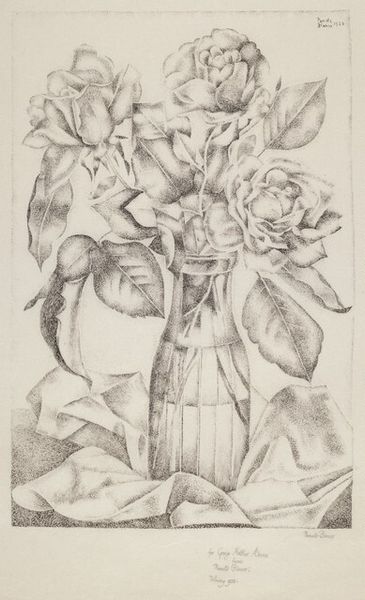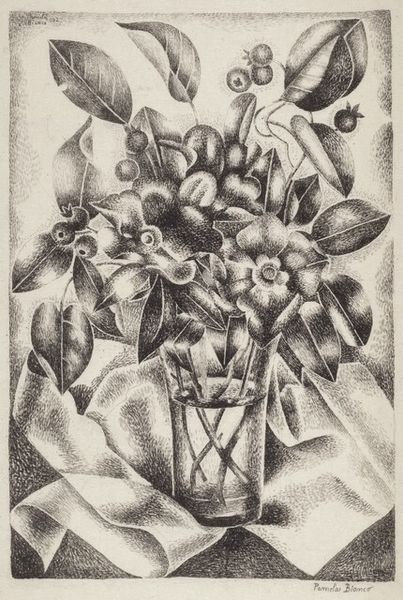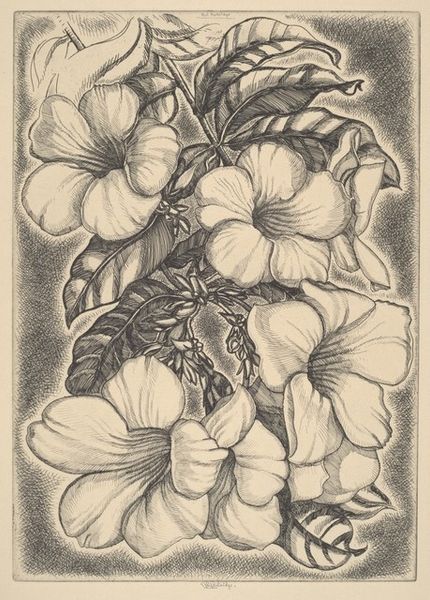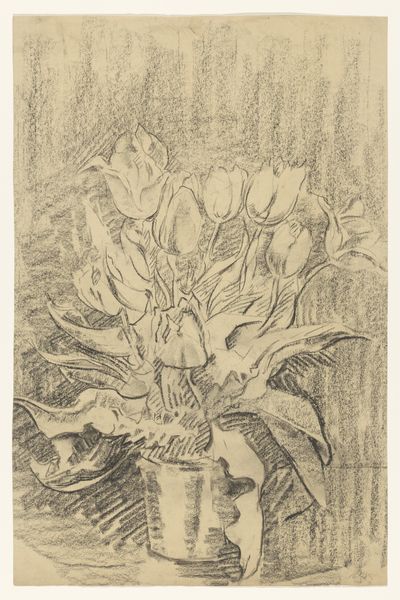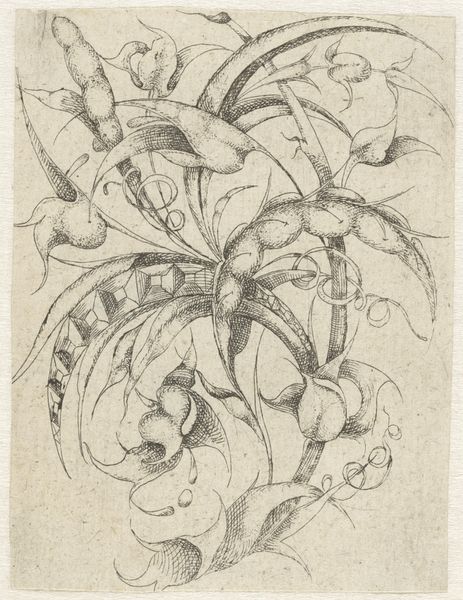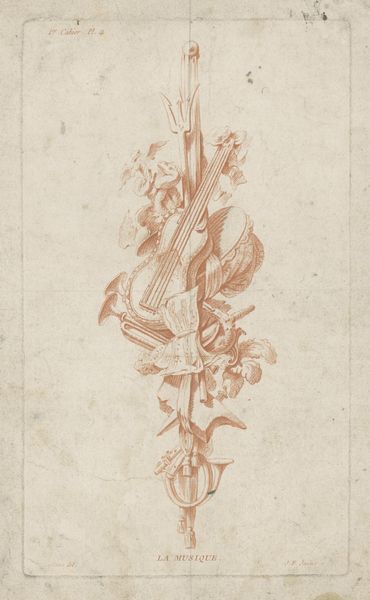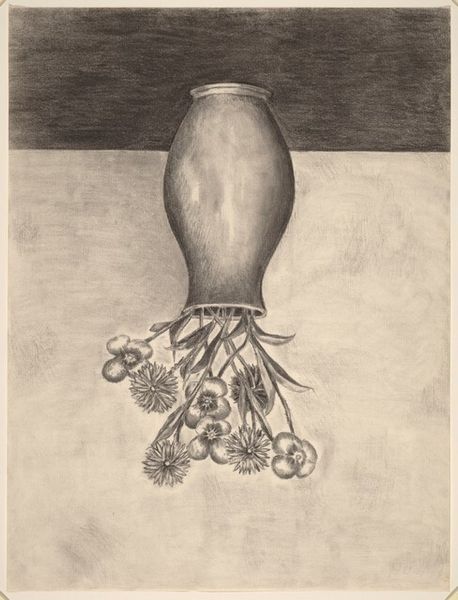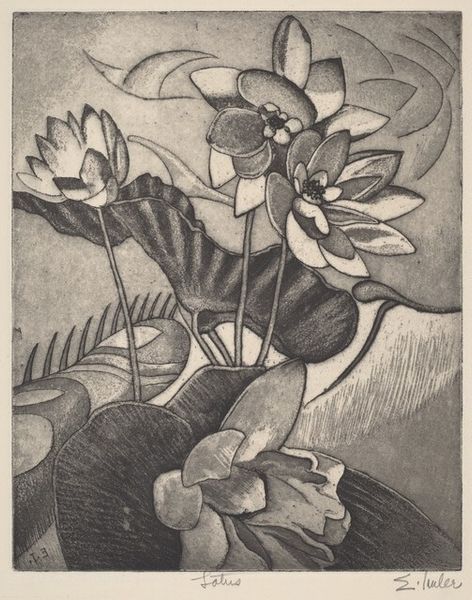
drawing, print, graphite
#
drawing
# print
#
pencil drawing
#
geometric
#
graphite
Dimensions: image: 290 x 173 mm sheet: 370 x 271 mm
Copyright: National Gallery of Art: CC0 1.0
Curator: There’s something immediately somber about this work by Pamela Bianco. It feels almost like a memento mori, doesn’t it? Editor: We're looking at "Zinnias", a drawing and print created in 1927, executed with graphite in what looks like a meticulous, almost pointillist style. I'm struck by how much labor went into rendering such a commonplace subject matter. Curator: Exactly! And the use of zinnias – those sturdy, late-summer flowers – are steeped in symbolic meanings across cultures. They often signify remembrance or thoughts of absent friends. Here, set in this somewhat austere glass, their effect is further deepened, hinting at loss and reflection. It reminds one of funerary flower arrangements that embody cultural notions of death. Editor: But doesn’t that elevate what otherwise could be dismissed as a purely decorative domestic object? Bianco elevates craft to an art, in rendering such detail. We have these repeated tiny graphite marks creating this soft gray tone in the flower petals, and a range of optical effects, that suggests real three-dimensionality, but entirely constructed through manual processes. I am keen to contextualize this relative to gendered artistic labour and commodity culture. Curator: And the composition further strengthens the feeling; this is not a celebration of vibrant life, it's a portrait, a kind of solemn portrait in ink. Look how she meticulously defines the space in and outside of the glass, perhaps alluding to containment, constraint, and emotional or creative barriers. Editor: I see it in those pea pods – a surprising inclusion in a floral still life, they bring me to thoughts of garden harvests and manual agricultural work, too. Bianco also introduces a subtle disruption – they break out from typical representations of bourgeois consumption. The geometric border is almost a distraction; it fails to confine these floral and agricultural forms, almost attempting to mimic a manufactured edge in this hand rendered copy. It serves to challenge our perception of production methods. Curator: It’s a work that invites a second and a third look, not because of its grandeur, but because it softly resonates, inviting us to ponder transient nature, its beauty, and ultimate ephemerality. Editor: Yes, "Zinnias," through both material execution and visual elements, prompts an unexpected dialogue about the meanings of labor, value, and cultural associations with death during this interwar period.
Comments
No comments
Be the first to comment and join the conversation on the ultimate creative platform.
